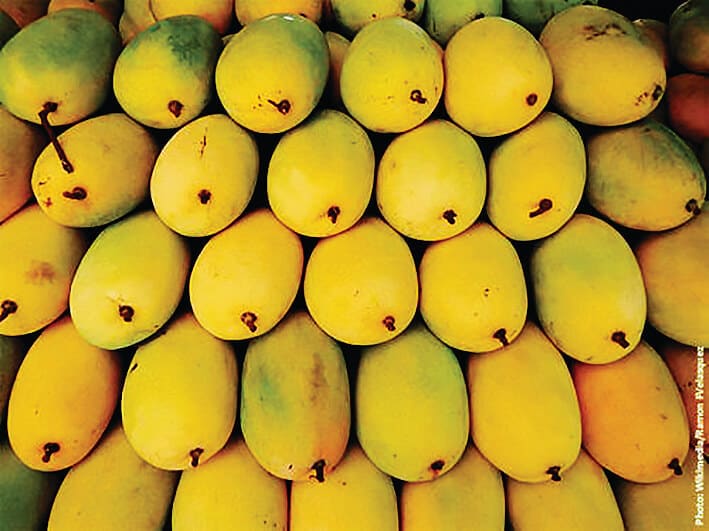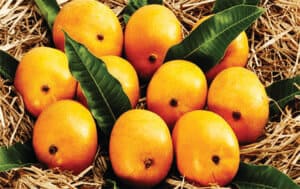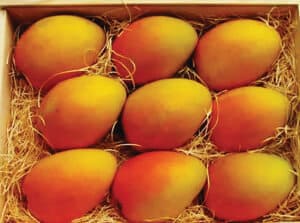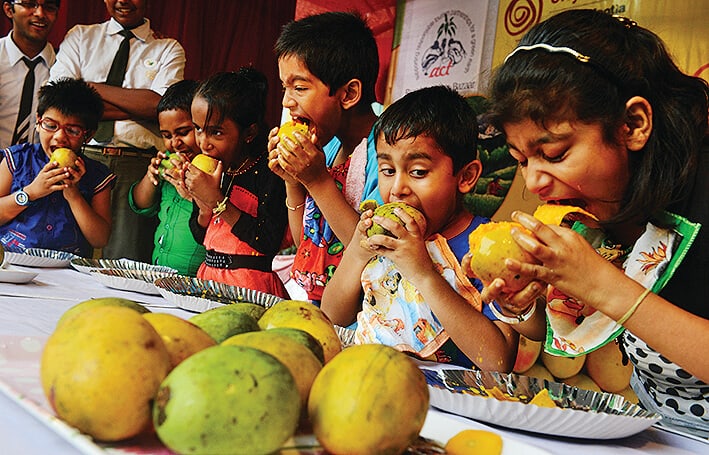An opinion poll conducted by Gurgaon Foodie finds that Langra is the most preferred variety of mango in Delhi-NCR
Alfonso or Haapus is seen by many as the king of mangoes in India. But do the residents of Delhi NCR agree? Doesn’t look like it.
India has loved mangoes since time immemorial. Seen as one of the best parts of the blistering Indian summers, the love for mango unites the country – and also divides it, because there are 283 types of mango found in India, of which 30 are well known; and in the choice of mangoes varies and more often than not, provenance determines preference.

So those from the west swear by Alphonso or Kesar from Gujarat. East dotes over Himsagar. South has its fans for Banganapalli or Badami, and north is spoilt for choice between Dushehri, Langda, Safeda, Chausa and many more flavourful options.
In an opinion poll conducted by Gurgaon Foodie, NCR’s leading Facebook food community to find out which was the favourite mango of Delhi NCR, Langra from Varanasi came on top with 32% of those voting choosing it as their first choice. The much hyped and talked about Alphonso trailed at the fourth spot with a mere 9% votes.
So what is it that makes Langra the king of Delhi-NCR? Says Rudraksh Khandelwal, Specialist, Application Lifecycle Management at Sapient Consulting, “Amongst the varieties that I’ve had this is my personal favourite. The aroma, the taste is just perfect”. Adds avid foodie and techie Anand Srivastava, “It has that tang, which is there in very few mangoes”.

This variety – medium of size, oval of shape, green on the outside and bright lemon-yellow flesh inside — is loved all over the north for its super juiciness, flavour and lack of fibre. Langra (meaning ‘lame’ in Hindi) has its origins in Varanasi. In case you wonder about the reason behind this strange name, the legend is quite predictable. Some three centuries ago there lived a lame man in Kashi who ate a mango and then planted the seed in his backyard. For some inexplicable reason, the mangoes from this tree were rather good. So the tree and its offspring trees and fruits over time became famous as the Langra variety.
Now Langra is famous and can be found everywhere in the country, but these mangoes grown on Varanasi land have a distinct, authentic taste that its residents claim will not be found anywhere. Available from May to August, the flesh has a strong fragrance when it ripens. As compared to other varieties, it is naturally very sugary and soft. The size of the seed is small and oval in shape. Langra maintains its green colour after it ripens, while other mangoes change into yellow-reddish colour. This pulpy fruit is cultivated in mid-season in Uttar Pradesh, Bihar, Gujarat, Haryana, Himachal Pradesh, Jharkhand, Madhya Pradesh, Odisha, Punjab, West Bengal and Rajasthan.

A close second at 22% is Dushehri. This delicious variety is also grown in northern parts of India, Malihabad in Uttar Pradesh being the largest producer of Dushehri mango and along with other varieties of mangoes such as Chausa, Fazli, Lucknowa, Jauhari and Safeda. Where it loses out to Langra is in being too sweet and lacking that characteristic mango tang.
Same is the case with Safeda (17%), one of the earliest varieties of mangoes to hit the market. The skin has a lovely bright yellow hue and the taste is slightly sour. These mangoes are quite fibreless, which mangoholics of NCR seem to prefer.
However, Delhi-NCR is by and large quite dismissive of what many call the best mango of India – Alphonso, with a mere 9% choosing it. Among those who do not like it, fibrousness seems to be an important reason.
So which mango gets your food juices flowing? If it is Langra, a third of Delhi is with you in your choice.





